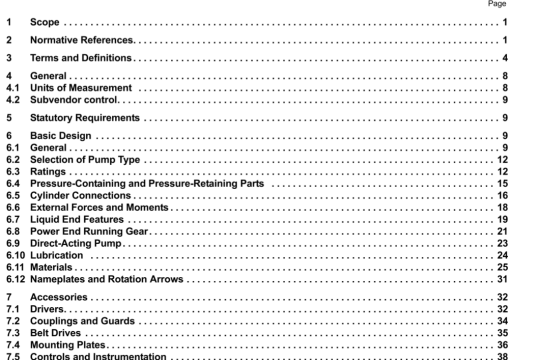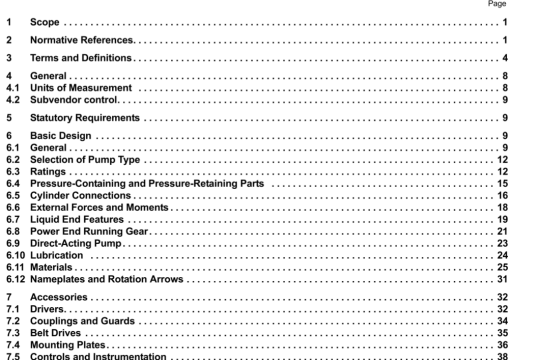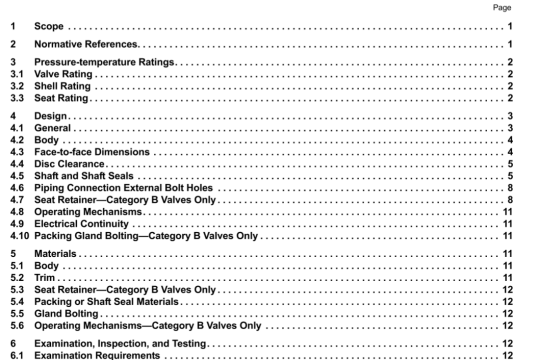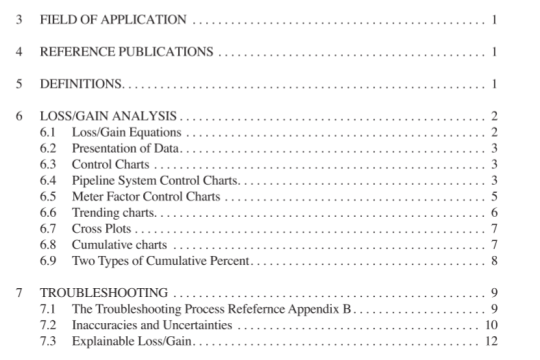API RP 1166:2010 pdf download
API RP 1166:2010 pdf download.Excavation Monitoring and Observation.
To protect the public, excavation employees, and the environment by preventing damage to pipeline assets from excavation activities.
Th provide a consistently applied decision making process for monitoring and observing of excavation and other activities on or near pipeline Rights-of-Way for “hazardous liquid” and “natural and other gas” transmission pipelines.
Note: One call provisions and laws vary by state and it is the operators resjx)nsibiliIy to be familiar with and comply with all applicable one-call laws
2 Definitions
2.1 originator: An individual or company who has identified and made notification of an excavation activity and / or initiated
a one-call ticket
2.2 one-call center: An entity that administers a system through which a person can notify owners / operators of lines or
facilities of proposed excavations
2.3 ticket: Documentation of the one-call request or the identified excavation activity – includes assigned number identification for tracking the ticket and all associated documentation
2.4 activity/request: Identified excavation activity or one-call ticket request. Examples include an activity notification from
an aerial overflight, a one-call ticket issued from a one-call center, an internal notification made from pipeline maintenance
employees during Right-of-Way patrol, or a notice from the general public
2.5 locate: To indicate the existence of a line or facility by establishing a mark through the use of stakes, paint or some other customary manner, that approximately determines the location of the line or facility.
2.6 excavation monitoring: Defined in Task Description Outline—Task E
2.7 excavation observation: Defined in Task Description Outline—Task G
3 Decision Node I
Contact with Originator is not required if the exact work location is known and without question work or activity falls outside designated company determined buffer zones. If any question exists, designated field personnel must contact the originator and document the results of the conversation before closing the ticket.
Contact Originator for more information when the above is not met.
Examples of situations requiring Originator contact include, but are not limited to:
• Work location falls inside company defined buffer zone
• Ticket is classified as an emergency
• Address cannot be located on map or appears to be incorrect (e.g. Street number and name don’t correspond)
• Ticket indicates location map or additional inthrmation is available upon request
• Ticket contains conflicting or unclear information on work location or work scope
• Positive response required by regulations
Examples of specific verifiable work locations include, but are not limited to:
• SW corner of intersection of Main and Beacon Streets
• Front Property Line of 704 Byrne, going East for 500 feet
• Global Positioning coordinates information provided
Examples of general work locations requiring Originator contact:
(includes but is not limited to:)
• Approximately five miles east of city on Highway 77, then I mile south on lease road
• 704 Byrne (rural location and property size unknown)
– Duration of expected excavator work- Type of equipment
– Potential impact on pipelineComplexity of work
– Multiple contractors / excavators
.Conduct site visits on pre-determined frequency wl documentation of contact. Documentation may include:- Name of contact person
– Status of work
– Scope changes
– Confirm one-call ticket is current·Exercise authorities as defined in Task G.Obtain safety and security documentation13Task F
Excavation Observation not requiredSelf-explanatory (continue monitoring)14Task G
Excavation Observation(includes but is not limited to:)
. Obtain safety and security documentation
. Continuously present at all time excavation and backfilling is underway
. Affirmative communication with on-site excavation lead at site daily (at least)
Conduct site visits on pre-determined frequency wl documentation of contact. Documentation may include:- Name of contact person
– Status of work
– Scope changes
– Confirm one-call ticket is current
Observe compliance with agreed upon design / specification / scope of work
– Digging criteria are being met (hand excavation etc.- pipeline company prescribed criteria;undermining suppor)- Hazards of this pipeline are recognized at excavation site, known hazards are communicated.




